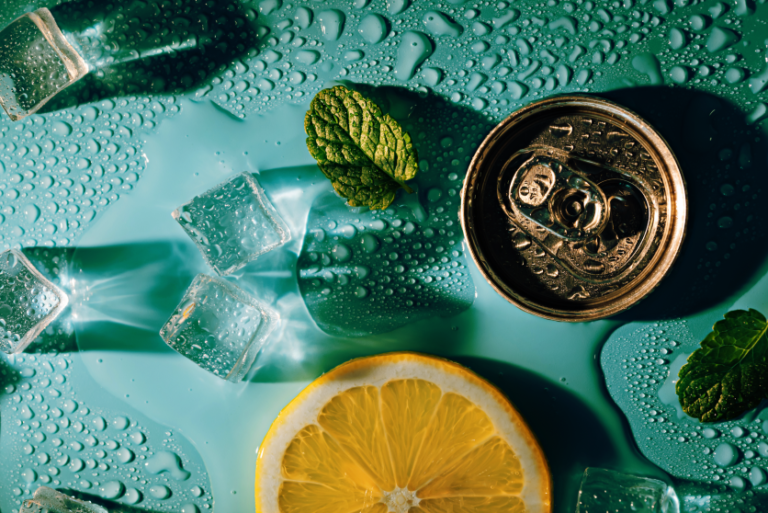This website uses cookies so that we can provide you with the best user experience possible. Cookie information is stored in your browser and performs functions such as recognising you when you return to our website and helping our team to understand which sections of the website you find most interesting and useful.
24/02/2025
Shifts in moderation strategies for beverage alcohol
IWSR data shows rise in light consumption, single-category occasions and temporary abstinence
The latest findings from IWSR’s Bevtrac 2024 Wave 2 report reveal a transformative shift in global beverage consumption habits, with moderation becoming more ingrained in consumer habits over the past 12 months.
Drinkers are now more habitual in their control of alcohol intake, but 2023’s spike in abstaining from alcohol altogether now looks to be a blip. Consumers have returned to beverage alcohol in substantial numbers, including younger LDA+ consumers, however single-category occasions and temporary abstinence are becoming common methods for regulating consumption.
The trend spans all age groups, regions, and demographics, highlighting moderation as a mainstream cultural phenomenon rather than a trend limited to younger LDA+ consumers.
Light consumption grows
The proportion of Light drinkers – defined as those with low frequency and intensity of consumption – has increased significantly. Across the 15 key markets, light drinkers now represent the largest segment, surpassing medium and heavy drinkers.
Temporary abstinence
Across the key 15 Bevtrac markets, temporary abstinence – abstaining for a specific period of time – is a popular moderation strategy, especially amongst younger LDA+ generations. In India, where Bevtrac surveys more affluent drinkers across 10 major cities, 71% of these drinkers reported abstaining for a period, demonstrating the highest rate of temporary abstinence among all surveyed markets. In markets such as South Africa, Mexico and Brazil, over half of drinkers report similar behaviour.
Single-category occasions
Single-category occasions, where drinkers limit themselves to one type of beverage during an event, are on the rise across markets. For many consumers in the study, limiting the occasion to a single category appears to reduce the amount of drinks consumed.
- Across 15 key markets, the average number of beverage categories consumed per occasion dropped from 2.4 in 2023 to 1.8 in 2024.
- Across the key markets, 66% of occasions involve just one category, versus 49% in the previous year.
- Beer is the most frequently chosen single category
This shift illustrates how consumers are making deliberate choices to maintain balance without forgoing social engagement.
No-alcohol category flourishes
The no-alcohol segment continues to thrive, with 26% of drinkers across the 15 markets consuming no-alcohol beverages. Participation is highest in Spain (40%) and Germany (44%), and has doubled in North America compared to the previous year, though remains low by comparison with European markets. No-alcohol beers are a standout success globally, while no-alcohol spirits are gaining traction, especially in the US, Germany, and the UK.
Health and wellness cues
Health and wellness are the primary motivations for reduced alcohol consumption. Over 41% of no-alcohol drinkers state they choose these products to support moderation, with another 35% citing practical reasons like avoiding hangovers or being able to drive. An emerging behavioural shift sees consumers seeking variety in flavours and formats, further expanding the category’s potential.
How do these shifts in moderation strategies impact industry players?
One of the biggest findings from IWSR’s latest Bevtrac wave is that permanent rejection of the beverage alcohol category is now much less of a factor among consumers than it was in early 2023.
“It’s now becoming clear that some of the withdrawal from alcohol at that time was more to do with economic worries and lingering effects of Covid and associated lockdowns,” observes Richard Halstead, COO Consumer Research, IWSR.
“Eighteen months on, participation rates in alcohol are aligning with long-term norms. Younger LDA+ drinkers still lag in terms of participation levels, but the participation gap between this group and older cohorts has narrowed significantly.”
However, the latest data brings a bigger challenge for drinks industry leaders in terms of the new norms of beverage alcohol consumption.
Drinking less on an occasion, and sticking to one beverage category (or switching between alcoholic and no-alcohol options within an occasion) appear to be evolving into mainstream strategies, and go a long way to explaining the subdued volume growth in TBA across major consumption markets.
“The reduction in volume and multi category usage at an occasion will serve to increase competition for that “first drink” – which might be the only drink of the night,” comments Halstead. “This evolution is likely to accelerate the trend towards seeking out higher quality or more reliable beverages, at higher prices, to reduce the risk of that single drink turning out to be a disappointment to the purchaser.”
The above analysis reflects IWSR data from the 2024 data release. For more in-depth data and current analysis, please get in touch.
CATEGORY: All | MARKET: All | TREND: Moderation |




